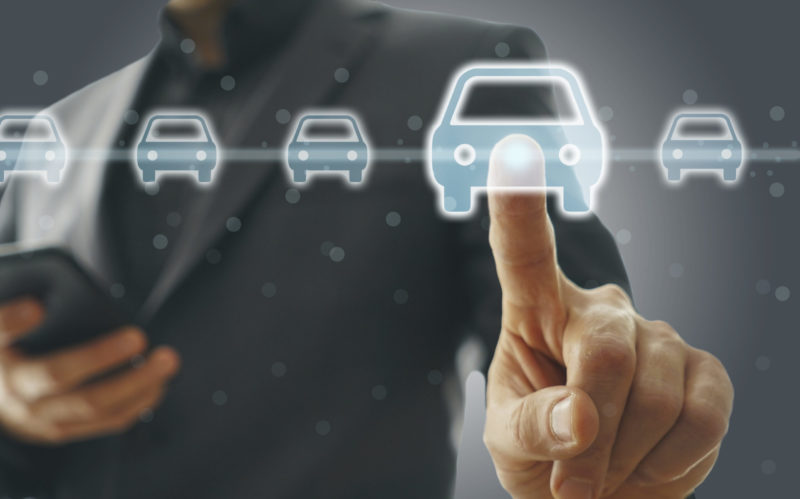Take a look at your BHPH operation. Have things been just chugging along, or maybe sales are down? Is a competitor impacting business? More and more BHPH dealers are discovering how a Lease Here-Pay Here (LHPH) model can revamp operations and improve revenue.
Importantly, an LHPH strategy goes beyond enhancing the bottom line. This approach centers around a new way of meeting customers’ needs and creating a stronger bond with these clients. We’ll go over some basics and then dive into the many considerations of an LHPH operation.
What Is Lease Here-Pay Here?
LHPH operates similarly to a Buy Here Pay Here business. The selling process is the same as is the typical customer. Even the approach to handling payments and collections is virtually indistinguishable from BHPH activities. The difference is that you are, in effect, renting out a vehicle. When the lease term is over, the car returns to the dealer, or the customer can buy the car.
Why LHPH?
For the customer, an LHPH vehicle usually means a lower monthly payment or a newer car compared to a BHPH deal. For the dealer, an LHPH transaction can mean higher profits and lower risks.
Read on as we review LHPH pros and cons.
LHPH Advantages
Increased Profits
Think about a BHPH transaction. You sell and finance a car. And, if things go well, you made money from the vehicle markup and the finance charges. When the vehicle is paid off, you close the file and move on.
However, the revenue stream is different with LHPH. Lease charges cover vehicle depreciation and the interest (or money factor) on the car’s value. Unlike a traditional BHPH loan that eventually has the balance paid down to zero, a lease usually covers a shorter term that only involves depreciation and interest. You can still add a markup to the car with a lease, and you’ll still collect interest (called a rent charge). But, when the lease term is over, you’ll have the car back to sell or re-lease (if the customer doesn’t buy the car). So. you’ll have an automatic addition to inventory and the chance for another round of profits.
Let’s look at some examples based on a car with a $6,000 actual cash value and a 25 percent interest rate. Down payment, sales tax, capital costs, bad debt allowance, and asset depreciation are not included for simplicity.
BHPH Transaction
$12,000 retail ($6,000 ACV)
36 payments @ $477 per month = $5,176 interest
Vehicle Markup = $6,000
NET = $11,176
LHPH Transaction
$13,500 retail ($6,000 ACV)
20% residual value ($2,700)
36 payment @ $468 per month = $6,074 rent charge
Vehicle Markup = $7,500
NET = $13,574
With the lease, the customer pays slightly less per month than with a loan, but the net income numbers are substantially better. Plus, you’ll have the leased vehicle back in inventory after the term ends and can start the cycle all over again. Another way to look at the advantages of LHPH is being able to put a customer in a newer car for a monthly payment that’s similar to a loan. For example, if the vehicle has an $8,000 ACV, then the net drops to $11,574, but your customer gets a newer and more appealing car (which you’ll get back).
Fee Income
A lease opens up the opportunity to add various fees to the transaction, including charges for lease acquisition, a purchase option, and lease disposition. A refundable security deposit may help offset any upfront dealer-side costs like titling and sales tax. Other fees worth consideration are charges for excess mileage or damage beyond normal and tear. Make smart use of these fees to help the bottom line, but ensure that these charges are applied equally to all leases.
Improved Customer Affordability
Thanks to the pandemic, the global semiconductor shortage, and other factors, the topsy-turvy used car market continues to see tight supply and ever-increasing prices. According to iSeeCars.com, used car prices in June increased 32.7 percent ($7,583) compared to the same period from the previous year. Plus, May saw a 26.4 percent year-over-year increase and there was a 16.8 percent year-over-year increase from April.
In other words, if your customers had a difficult time paying for cars in normal times, it’s not any easier now. Of course, affordability not only helps the customer but reduces the chances of default, which saves you time, effort, and money. So, the LHPH model offers benefits to both parties in the transaction.
As mentioned earlier, the flexibility of an LHPH approach allows you to offer a newer car for the same monthly payment as an older car sold with a loan. Such a technique helps with customer goodwill and reduces the likelihood of mechanical issues. And, as we know, collection issues are likely to pop up when a customer can’t afford to repair a car.
It’s also easy to show a customer the advantages of leasing. This can be presented in two ways. First, working of one car, show the payment options for leasing versus a loan. Or, present how for the same payment, the customer can choose from a ten-year-old car with 140,000 miles or a five-year-old car with 75,000 miles. By offering options, you’re empowering the customer to decide, enabling them to feel positive about the transaction.
Staying Competitive
How many times have you closed a deal simply by providing a monthly payment that met the customer’s needs? Leasing is simply another tool to help in these scenarios. For example, the ability to offer a car for $50 less per month than a BHPH competitor means you’ll put more people behind the wheel.
Similarly, LHPH gives you a competitive advantage by offering newer and more reliable vehicles for the same money as your cross-town rivals. It’s also easy to imagine how you can work low monthly lease payments into marketing messages.
Better Customer Relations
While the BHPH model still involves regular customer contact for payments and collections, it mostly ends when the loan is paid off. The customer will likely want to drive at least for a few months without payments. In which case, you may or may not see them back at the dealership.
In contrast, at the end of the lease term, the customer has a decision to make. Do they buy out the car? If so, you’ll have another opportunity to offer financing and make money from the interest. Or, do they want to re-lease the vehicle for perhaps another year or two? Again, another profit-making potential. Or, will the customer lease a completely different car from you? Regardless of choice, the customer is staying within your realm.
Remember that with LHPH, the dealership owns the car. So, you’ll want to encourage the customer to maintain the vehicle. This might involve working a service contract or free oil changes into the deal. Such an approach creates opportunities to periodically inspect the car to ensure it remains in good condition. At the same time, you’re promoting goodwill with the customer and further cementing that relationship.
Another customer-focused advantage of leasing is the ability to offer programs that allow qualified lessees to easily trade up to a lease with a better car. Even consider an early lease termination option. It may seem counterproductive, but this is a simpler way to get the car back in good condition than to have to deal with a repossession.
Sales Tax Savings
Having to pay the sales tax on a BHPH transaction is one of those necessary evils. It’s a chunk of change that can make a deal go sour, especially if there’s a default early on (some states won’t refund paid sales tax following a repossession).
Yet, in the majority of states, sales tax on leases is handled differently. With a traditional loan transaction, sales tax is paid upfront on the car’s total purchase price. In about 60 percent of states, sales tax on a leased car is only collected on the monthly payment.
For example, a 6 percent sales tax on a $13,500 vehicle means an upfront outlay to the state of $810. Obviously eating up most of a $1,000 downpayment. Yet, that same car with a $468 lease payment would only require $28.08 of sales tax each month—a much more manageable sum for a customer to handle.
If applicable in your state, this is another leasing advantage that can be highlighted to customers.
Repossession and Bankruptcy Management
Depending on state and local laws, repossession of a leased vehicle can be quicker and less involved than reclaiming a traditionally financed one. The dealer or finance company holds the title of a leased car, so repossession steps are often fewer. This is in contrast to a loan-based situation that may require a mandated process for notifications and recovery. Keep in mind that the longer it takes to repossess a vehicle, the greater the loss of revenue. Talk with an attorney to see how leasing repossession may differ in your jurisdiction.
In a bankruptcy situation, car leases are handled differently than with a traditionally financed vehicle. The lessee will return the car in most cases, and the customer and dealer go their separate ways. Sometimes, the customer may choose to keep the lease and continue to be responsible for the payments as agreed initially. A vehicle lease is not subject to a bankruptcy-mandated change of terms usually applied to a standard car loan. Again, consult with your lawyer for more details.
Income Tax Advantages
A tax professional can review the specifics with you, but in general, having a portfolio of leased vehicles may allow you to depreciate these assets and reduce tax liability.
Predictable Cash Flow
Noting that most car leases have a 36 month-term, it will take a few years to ramp up to a position when you can work with the predictable cash flow and cyclical nature of LHPH. It’s a good thing. At the end of each lease, you’ll have the opportunity to resell, re-lease, or wholesale the returned vehicle. And, chances are the customer still needs a car, so you can keep the LHPH process going.
LHPH Disadvantages
Of course, no business model is perfect. And while LHPH does present an excellent opportunity for many dealers, there are real-world considerations worth reviewing before making any changes to your business.
Accounting Changes
Because the LHPH model involves retaining assets, not selling them, you may need to rework how your accounting is structured. It’s particularly vital for recording depreciation (as mentioned above). This doesn’t require ditching your current structure (after all, you’ll still be selling cars, not just leasing them) but just layering in how you deal with these leased assets. Have a sit-down with your accountant to discuss the aspects of a transition to LHPH.
Different Lending Structure
Adding an LHPH model to your business will change how your company is financed. The portfolio of loans is supplemented by or changes to a portfolio of assets (the leased vehicles). Ideally, your current lender can work with these changes in a smooth and easy transition. In a worst-case scenario, you’ll need to source a new lender.
DMS Changes
Does your dealer management system have the ability to handle LHPH transactions? In a perfect world, the answer is yes, or it might just involve an easy upgrade. Otherwise, switching to a new DMS can be an expensive and burdensome project. You’ll also need to consider the implications of getting staff trained on an updated or new system.
Asset Management
Unlike the sell-it and move-on process with BHPH transactions, LHPH involves managing a portfolio of leased cars. This is essential because eventually, you’ll get these cars back. The better the condition of the vehicles ultimately means better profits down the line as you sell or re-lease these cars.
As previously discussed, develop a customer-friendly program that enables the regular inspection of each leased car. You’ll need to go beyond the occasional “eyeball” glance when the customer drops by to make a payment. Remember, these are your cars.
Legal Fees
Bringing LHPH to your dealership means you’ll need to develop entirely new sales documentation. As a result, there will be attorney’s fees and related costs. You may even want the lawyer to spend time with staff to familiarize everyone with what’s involved.
Staff Resistance
If you have a multi-staff operation, chances are at least one person is resistant to change. You know the type who folds their arms and says, “But, we’ve always done it this way.” Yet, these days survival is often reliant on change. So, getting your staff on board with an LHPH program is critical. They’ll need all the facts about how LHPH works and the differences from BHPH. Everyone who comes in contact with a customer, from the receptionist to the F&I manager, should understand LHPH.
All of this takes effort, which may detract from day-to-day business tasks. Consider using a bonus program (even short-term) to get sales staff aligned with a new LHPH program.
Customer Resistance
Just like some staff may be hesitant about changing the status quo, customers may be suspicious about new ways for dealers to sell cars. A well-versed and confident team is the best tool for overcoming any LHPH objections by customers.
Taking The Next Step With LHPH and NIADA
NIADA trainers can guide you in all the ins and outs of LHPH business. Explore challenges and opportunities, marketing strategies, compliance, and other essentials with us. For more info contact: learn@niada.com.








